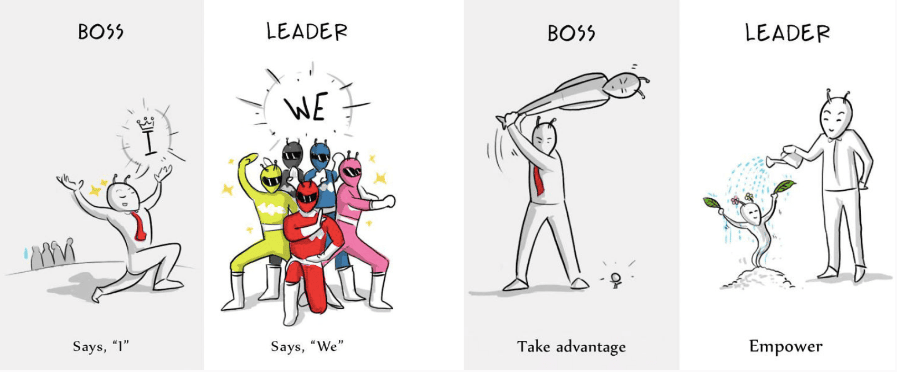How Winning Companies Use Delegative Leadership

Delegative leadership, also known as laissez-faire leadership, is a management style that empowers employees with significant autonomy in decision-making and task execution.
While this approach can promote creativity and innovation, it also comes with some pitfalls.
Let’s explore real-world examples of both successful and failed implementations of delegative leadership.
What is Delegative Leadership
Delegative leadership is a style where leaders delegate authority to team members, allowing them to make decisions and take responsibility for their tasks.
Leaders take a step back, providing minimal direct supervision and allowing team members to work independently.
This style relies heavily on trust. Leaders must believe in their team’s abilities to make the right decisions and handle responsibilities effectively.
Because team members are empowered to make decisions, there is an increased sense of ownership and accountability.
The Origins of Delegative Leadership
Delegative leadership was first described in the 1960s by Kenneth Blanchard and Paul Hersey as the process of “handing off responsibility from a leader to a worker”
What is Another Word for Delegative Leadership?
Another term for delegative leadership is laissez-faire leadership.
Case Studies of Success in Delegative Leadership
Case Study 1: Google’s 20% Time

Google’s “20% time” policy is a prime example of successful delegative leadership.
This initiative allows employees to spend 20% of their work time on projects of their choice, unrelated to their regular responsibilities
It was introduced in the early 2000s by Google’s co-founders Larry Page and Sergey Brin. They believed that giving employees freedom to explore their passions would lead to innovations.
Engineers are encouraged to pursue projects they find interesting, even if they’re not directly related to their core job functions.
This autonomy has led to the creation of some of Google’s most successful products, including:
- Gmail: Developed by Paul Buchheit as a side project.
- Google News: Created by Krishna Bharat during his “free” time.
- AdSense: Originated from a 20% project by Paul Buchheit and others.
These successes demonstrate that when employees are given autonomy and trust, they can generate significant value for the company.
Read more about Google’s 20% time
Case Study 2: 3M’s 15% Culture
3M’s “15% Culture” is another excellent example of delegative leadership fostering innovation.
The 15% Culture at 3M encourages employees to spend 15% of their work time on projects of their choosing, similar to Google’s approach.
Employees are given the freedom to experiment with new ideas and technologies, even if they’re not directly related to their current projects.
This policy has led to numerous innovations, including:
- Post-it Notes: Invented by Art Fry during his 15% time.
- Multilayer Optical Film: Developed through the 15% program.
- Cubitron™ Abrasive Grains: Another product of the 15% Culture.
3M’s success with this approach underscores the importance of fostering a culture of innovation and trust.
Learn more about 3M’s innovation culture
Case Study 3: Virgin Group (Richard Branson)

Richard Branson’s leadership style at Virgin Group exemplifies successful delegative leadership on a large scale.
Branson founded Virgin Group in 1970 and has since expanded it into a global brand encompassing over 400 companies. His leadership style is characterized by trust, autonomy, and a focus on employee empowerment.
Branson hires talented people and lets them run with it.
Leadership at Virgin Group can be seen through:
1. Empowered Leadership
Branson is known for hiring talented people and then stepping back to let them run their respective businesses. He famously said, “If you can run one company, you can run any company.”
2. Encouraged Risk-Taking
Branson fosters a culture where employees are encouraged to take risks and learn from failures. For example, when Virgin Cola failed to compete with Coca-Cola, Branson used it as a learning experience rather than a reason for punishment.
3. Flexible Work Arrangements
Unlike Yahoo’s ban on remote work, Virgin Group has embraced flexible working arrangements. In 2014, Branson announced that Virgin’s parent company would allow staff to take unlimited vacation time, trusting them to take time off when needed without negatively impacting their work.
4. Encouraging Innovation
Branson’s hands-off approach has led to numerous innovative ventures. For instance, Virgin Galactic, the world’s first commercial spaceline, was born from an employee’s idea.
5. Leading by Example
Branson often takes a hands-on approach to understanding his businesses. He’s known for dressing up as a flight attendant or working behind the check-in desk to experience his companies from an employee and customer perspective.
Virgin Group’s success across diverse industries demonstrates the effectiveness of Branson’s delegative leadership style. The company has expanded into sectors ranging from music and airlines to telecommunications and space travel.
Learn more about Branson’s leadership style
Case Study of Failure in Delegative Leadership
Case Study 4: Yahoo under Marissa Mayer

When Marissa Mayer joined Yahoo as CEO in 2012, she aimed to turn the struggling company around. Her attempt at delegative leadership didn’t quite hit the mark.
Mayer joined Yahoo in 2012 with the goal of turning around the struggling company. She attempted to implement a more hands-off leadership style, but it quickly became apparent that this approach was not working.
What went wrong?
1. Micromanagement
Despite claiming to implement a delegative style, Mayer often engaged in micromanagement. For example, she personally reviewed every new hire, regardless of position, which slowed down the recruitment process significantly.
2. Lack of Clear Vision
Mayer’s strategy was often described as “scattershot.” As one analyst put it, “The Yahoo way is, ‘We’ll throw 10 rocks against the wall and see which one breaks through'”. This lack of focus led to confusion among employees and investors.
3. Declining Employee Morale
An employee engagement survey revealed dramatic drops in metrics such as morale and trust in executive leadership. The ban on remote work, implemented in 2013, was particularly controversial and seen as contradicting the delegative approach.
4. Poor communication
The absence of strong leadership communication resulted in a fragmented company culture.
Yahoo’s value continued to decline under Mayer’s leadership, ultimately leading to its sale to Verizon in 2017. This case highlights the importance of balancing autonomy with clear strategic direction and effective communication.
The result? Yahoo’s value tanked, leading to its sale to Verizon in 2017 for a mere $4.48 billion. Ouch!
Read more about Yahoo’s decline under Mayer
Benefits of Delegative Leadership

1. Creativity and Innovation
By giving team members the freedom to explore new ideas, delegative leadership -promotes creativity and innovation.
2. Job Satisfaction and Motivation
Autonomy leads to higher job satisfaction and motivation, as employees feel more valued and trusted.
3. Time Management and Efficiency
Delegative leaders allocate tasks based on team members’ strengths, improving time management and overall efficiency.
Challenges of Delegative Leadership
1. Lack of Accountability
Without clear oversight, there’s a risk of lack of accountability among team members.
2. Misalignment and Chaos
The absence of direct supervision can lead to misalignment and chaos if team members are not well-coordinated.
3. Overwhelmed Team Members and Burnout
High levels of autonomy can sometimes overwhelm team members, leading to burnout.
How to Succeed With Delegative Leadership
Effective delegative leadership requires a delicate balance of autonomy and guidance. While encouraging innovation through employee empowerment, leaders must still provide clear strategic direction.
Success often hinges on investing in hiring and training skilled, self-motivated employees. Which isn’t easy.
But when it works, oh boy does it work! You get innovation, happy employees, and efficiency that would make a German engineer weep with joy.
So, are you ready to let go of the reins and see what your team can really do? Just remember, with great power comes great responsibility. And possibly some really weird side projects. But hey, that’s half the fun!
Now go forth and delegate like a boss! Your employees (and your stress levels) will thank you.







